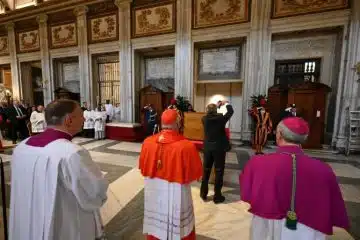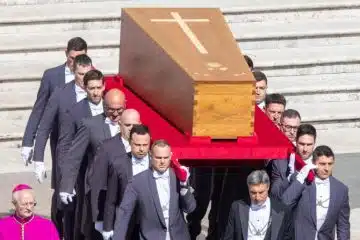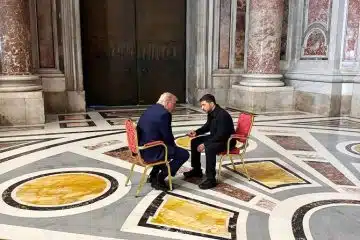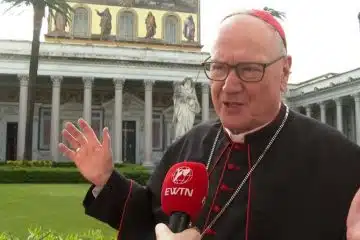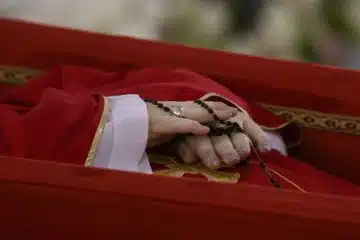Sunday Scripture: Simplicity and silence in the Gospel
Wednesday, April 8, 2009
By Father Timothy P. Schehr
Acts 10:34-43; Colossians 3:1-4 or 1 Corinthians 5:6-8; John 20:1-9
John’s Easter Gospel is remarkable for its simplicity and its silence. John lets us discover the wonderful truth of the Lord’s victory over death by letting us see it for ourselves as we follow in the steps of the very first witnesses.
It is the third day since the Lord’s death on the cross. Joseph of Arimathea and Nicodemus have honored the body of the Lord by covering it with costly ointments and fine linen and placing it in a new tomb. It seemed a fitting and final tribute to one they had come to love and respect. But of course the Lord’s mission has not, as they seem to assume, come to an end.
It is still dark when Mary Magdalene arrives to spend some time at the tomb. But the darkness that prevails at the beginning of this reading will yield to the bright light of faith. Mary will know her Lord has risen from the dead just as He said He would.
The first hint of resurrection comes with Mary’s discovery that the stone has been rolled away from the entrance to the tomb. But Mary does not yet comprehend what she sees. She immediately jumps to the conclusion that someone has taken the body from the tomb. Her preoccupation with locating the body of the Lord dominates her thinking until she actually hears the Lord speak her name (John 20:16). But for the present Mary is determined to find the body of the Lord.
Mary hurries to seek the help of Peter and the other disciple. This other disciple with Peter is very likely the same one who arranged Peter’s entrance into the court of the high priest on the night of the Lord’s arrest. So this other disciple probably witnessed Peter’s threefold denial of his Lord. This was probably the subject of their conversation on the morning of that first day of the week.
Suddenly Mary bursts in with her announcement that the stone in front of the tomb has been rolled back.
They rush to the site of the tomb. We can almost hear the sound of their steps as well as the sound of their hearts pounding inside of them. Peter falls behind. Does he tire because of age? Or does he need time to think through what he will say to his risen Lord after denying Him?
Through the eyes of Peter and the other disciple we see more evidence of the resurrection. There are linen cloths lying within the tomb and the head cloth is rolled up in a separate place. We saw similar evidence in the raising of Lazarus from the tomb. But there are differences too. This time the linen and the head cloth are inside the tomb. And this time the cloth around the head has been rolled up. Rolling up can signal that something is over. Does this rolling up signal that death has lost its power? The other disciple sees all of this and believes. Peter remains silent.
But Peter has plenty to say in the first reading. With all doubts and fears set aside, he boldly preaches the Gospel to the household of a Roman officer named Cornelius. As Peter speaks we realize how much he has changed. He is filled with conviction. He is fully aware how privileged he is to be among those chosen by God to accompany Jesus of Nazareth in Judea and to be witnesses to the Risen Lord.
Paul has plenty to say in this letters to the churches of Colossae and Corinth. He shares Peter’s enthusiasm about the Lord and the new life won for us through His resurrection from the dead.
Father Schehr is a member of the faculty at the Athenaeum of Ohio.


